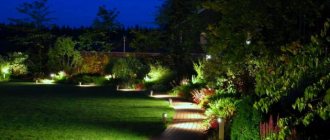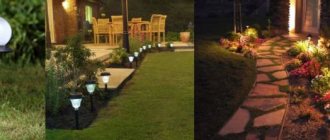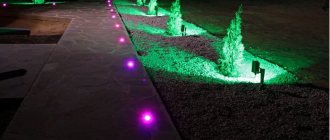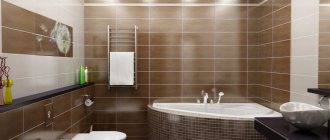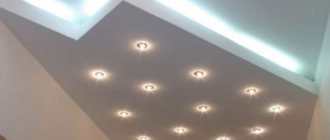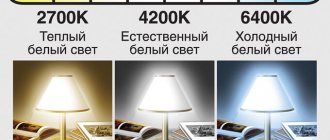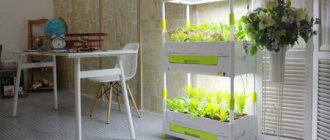Electrician in the house
Encyclopedia about electricity from A to Z
Masters catalog
Find the best master or company in your city
Lighting of a summer cottage
The lighting in a summer cottage is somewhat different from the lighting in the house itself. And the point here is not so much in the scheme, which in general is quite similar, but in the principle of constructing the network itself and its installation diagram.
After all, here the issue of reliability and cost-effectiveness of street lighting becomes much more pressing. After all, no one wants to pay for electricity that is wasted.
- Types of street lighting for a summer residence Types of lighting
- Lighting division based on switching principle
Basic requirements for site lighting
The organization of the lighting system should be carried out taking into account various factors, so that at night the summer cottage is not only safe, but also does not lose its aesthetics. The following requirements are put forward for lighting of dachas and courtyard areas of country houses:
- safe electrical wiring, the presence of an RCD and a circuit breaker in the circuit;
- convenient lighting control;
- all system components, incl. lanterns, light bulbs, switches must be intended for outdoor use, be moisture and dustproof. Cable laying is required in a corrugation or pipe;
- All areas of the dacha need to be illuminated; ideally, in the evening and at night the boundaries are perfectly visible;
- use of energy-saving light bulbs. This point is especially important if outdoor lighting is required daily.
In addition, you will need to develop a lighting scheme for the area. This must be done according to a certain rule.
Attention!
It should be drawn up before the start of landscape design work. Otherwise, when laying cables, you will have to destroy existing elements.
Drawing up a lighting plan for the area
Due to the large assortment, making a choice is quite difficult. I want to use everything at my summer cottage:
- decorative type lanterns;
- illuminated garden figures;
- lamps with moonlight;
- colored lanterns designed to decorate tree crowns;
- garlands, etc.
All this can cause chaos, which can be avoided if you think in advance about the main locations of the lamps, their number, dimensions, determine the functionality of the lighting and choose the style of lighting fixtures.
To do this, you need to draw up a plan diagram of the location of all the lamps on the site. For this purpose, you can use a photocopy of the territory diagram or draw a scale plan indicating all existing buildings.
Attention!
It is necessary to create a lighting plan in parallel with thinking through the remaining elements of landscape design.
The locations of future lamps are determined along with the design of gazebos, garden paths, ponds, patios, terraces and other recreation areas. If you don't do this, there is a good chance that you will have to redo some of these elements due to the need to run power cables.
You will need to draw up an electrical connection diagram: anyone who has at least a little knowledge of electrics can handle this task. But the entire lighting system must be installed by a professional so that it is safe for summer residents.
Rules for lighting design of a summer cottage
When designing and implementing a lighting project, there are several universal factors to consider.
It is necessary to avoid excessive quantity and power of lighting devices in every possible way. It is better to keep calculations and diagrams to a minimum. After all, there is always the opportunity to add new elements.
The exact location of the lighting fixture, especially in cases where the lighting angle is static, is best determined during experiments in a specific area, with specific lighting fixtures. This is the only way to adjust both the decorative and functional lighting effect.
The area should look well-groomed and harmonious also in the daytime. The style and decoration of lighting fixtures are striking during the daylight hours, so they must be selected in harmony with color and shape. You can also use masking of lighting fixtures.
Lighting nearby neighboring houses and plots can create dissonance and spoil the decoration by intersecting lighting rays. Neighbors' lighting needs to be taken into account, and when considering lighting options for your area, it is better to agree in advance with your neighbors on issues of functionality and aesthetics.
New Year in the yard: how to beautifully decorate the yard with your own hands!- How to make a modern landscape design with your own hands?
Microgreens at home
External lighting should not create discomfort indoors. Zoning the area will help to avoid both excess and lack of lighting.
The presence or absence of street lighting adjacent to a suburban area or if it is still at the project stage must also be taken into account when calculating and marking lighting points.
Types of site lighting
The lighting of a suburban area is assigned several functions simultaneously, for each of which a separate type of lamp should be provided.
Functional
The tasks of functional lighting are simple and clear. If decorative lighting cannot be used in every summer cottage, then it is impossible to do without general lighting. When highlighting all the important elements to increase the safety of movement around the territory, it is worth remembering that the accents in lighting should be placed on gazebos, patios, houses and other buildings.
Attention!
Garden paths should not be flooded with too much light so that those walking along them experience discomfort.
The most illuminated place on the site is the facade of the house and the porch: it will be more comfortable to move from less illuminated areas to brighter ones. Even late at night, functional lighting should allow you to see the boundaries of the site.
It is also necessary to highlight stairs, curbs, bridges and other most dangerous objects. Lamps should be placed evenly along the paths. The light source can be lanterns, floor lamps with frosted glass diffusers, bright spotlights, spherical lamps and other elements.
Decorative
This type of lighting is needed for recreation areas and objects that you want to admire even in the dark. Often, additional lighting is installed on flower beds, trees, shrubs, fountains, ponds, alpine slides, garden sculptures, as well as gazebos, patios and benches. Decorative lighting complements the main lighting and provides dim light, creating a romantic and slightly mysterious atmosphere. There are many ways to organize it - it all depends on the style of the site and the imagination of the owner.
To choose the right style of lamps for your garden, you can use a simple rule. The more elaborate and diverse the landscape design of the garden, the simpler and more concise the lighting items should be. If the style of the site is close to minimalism, then you can use lamps of the most bizarre and non-standard shapes, placing the emphasis on them in decorating the garden.
Features of lighting a private house outside
When designing a lighting system on a site, it is important to calculate the configuration of the devices, taking into account the dimensions of the house and the surrounding area, their shape, style and design. In addition, there are functional prerequisites, including the type of lamps used, available installation methods and cable routing
It is worth noting that all lighting devices used for outdoor lighting of housing must be safe, resistant to mechanical loads, low temperatures and high humidity, and have a sealed form.
Types of lamps used to illuminate a private home outside:
- Halogen lamps have a white glow that does not disturb the natural perception of colors. They are often used for floodlight systems, because they illuminate the space well without irritating the eyes.
- Metal halide lamps create bright rays, serving as an excellent solution for facade decorative lighting. The wide range of colors of the device allows it to be used not only for illuminating the outside of a house, but also for decorative lighting of artificial reservoirs (pond, fountain or pool).
- Fluorescent lamps are energy-efficient light sources that create evenly distributed light. In this case, it is better to give preference to compact samples that are devoid of blinking and flickering, which often appear in large fluorescent lamps.
- LED lamps are modern light sources that have immediately become popular with both homeowners and experienced designers. LEDs are perfectly suited for outdoor use; they have a small shape, long service life, and excellent technical and operational properties. In addition, the amount of electricity consumed is minimal, and the wide color palette allows you to create amazing lighting for the facade of a private house.
At the same time, not only the type of lamp matters, but also the housing that protects the light source from the aggressive external environment. Most people prefer aluminum cases, because they are safe and reliable, strong and durable. However, there are also more budget options, for example, acrylic and polycarbonate cases. The key element of the lighting system is the transformer.
The main types of lamps for the garden
It is desirable that the illumination of the area be a stylish and functional addition to it, and also not become a source of high electricity costs. Traditional incandescent lamps cannot be called the most economical option, because... During operation, they become very hot, which consumes most of the energy, quickly burn out, and at low temperatures can even explode. You can replace incandescent lamps:
- luminescent and halogen devices, characterized by economy and long service life;
- LED lamps and strips do not heat up, consume minimal energy, shine quite brightly, and in terms of durability they confidently outperform competitors. In addition, when using this type of lamps, you can easily change the brightness of the lighting. Often, decorative lighting is created using LEDs, arranging hidden lighting for ponds, steps, benches, the facade of a house, or hiding them in the crown of trees or shrubs;
- fiber optic systems are a new word in the field of garden lighting. Can be used as sources of main or additional light, architectural lighting or decoration of pools and ponds. Such a system consists of a projector (light source for the optical fiber), an optical cable or fiber, a common input, threaded attachments and various terminal devices. It turns out that with just one generator it is possible to provide lighting to a large area. The main advantages of the system: ease of operation, long service life, cost-effectiveness and the absence of requirements for waterproofing of lamps.
Separately, it is worth highlighting such non-standard modern solutions for garden lighting, such as paving slabs with LEDs built into them and fluorescent tiles with the ability to accumulate solar energy during the daytime.
Light decorations
Decorative lighting will never be superfluous on the site. By installing lamps in an alpine hill and flower beds, illuminating ponds and fountains, you can create stunning color effects.
It is important to consider the brightness of garden lights and the color of the light emitted. In a quiet recreation area it is better to place lamps with soft, dim light
Where company gathers, brighter lighting will be required.
Energy-efficient fluorescent and halogen lamps are used for decorative lighting. True, they work well at temperatures not lower than 10 degrees below zero.
And LED lamps are not afraid of any frost. They work great in any weather, creating soft light, ideal for illuminating plants, ponds, and small architectural forms.
Flowing soft light not so much dispels the darkness as it puts you in a romantic mood.
And candles and small lamps with colored glass create an atmosphere of intimate trust, so they are ideal for lighting a veranda, terrace or recreation area.
Types of street lamps by installation location
A wide range of lamps for lighting a summer cottage and the territory of a private house can be divided into several groups:
- floor lamps - lanterns of different heights;
- wall lanterns - they are used to illuminate a house or fences; they can be hung on the wall at any height;
- pendant lamps - lanterns and garlands that can be hung from tree branches or ceilings in gazebos;
- spotlights with a directional beam of light - installation is often carried out at ground level. They are necessary to illuminate those areas that need to be highlighted on the site;
- indirect lamps (lanterns with a reflector) - direct the light flux downwards, therefore they are used to illuminate garden paths and flower beds.
Fiber optic luminaires are placed in a separate group due to their unique properties and versatility of use.
Darkness is a friend of youth, but light is more fun
And this is where we think about lighting. The first thing that comes to mind is to look at a photo of the lighting of the site. And what do we see? A huge number of creative solutions. And this is far from a garden lantern on a table, as was commonly believed.
Incredible beauty opens before our eyes. And you can either do all this yourself, or buy it in a store and install it.
Types of lamps by light source
Lamps according to light source are:
- electric. They form the basis for lighting the area, are the most functional and require preparatory work, which includes digging trenches and laying cables in plastic or corrugated tubes;
- Solar-powered lanterns are an original and quite economical way to illuminate certain areas of the site. Such lamps can only be used as a supplement to electric lighting. During the day they accumulate energy from the sun, and at night they emit a soft, pleasant light. Installation is simple - the lamp is mounted where additional lighting is needed, there is no need to dig trenches, and if necessary, it can be easily moved to another place. Such lamps can be of any size, shape and design, they are expensive, but they do not use electricity. The battery will charge even in cloudy weather;
- objects painted with luminescent paint are a non-standard way to decorate your area and diversify its decorative lighting;
- open flame. Candles hidden in beautiful lampshades can be used to create a romantic atmosphere. Another option is kerosene lamps. This is a purely decorative source of lighting, which must be constantly monitored to prevent fire.
Outdoor lighting functions
The tasks of lighting a yard area are:
Comfortable movement of the owners and guests of the house around the territory of the land after sunset. Typically, to solve this problem, yard lights with LED or halogen lamps are placed along all paths.
Decoratively emphasize the beauty of the surrounding nature around the building. To do this, the owners of the site use colored lighting for colorful flower beds, a swimming pool, a small pond, a fountain, and an alpine slide. The use of an electronic control system makes the yard a “fairy-tale” and unique corner of your country life.
Protection from bad visitors. Bright lighting on the street will reduce the ardor of those who like to profit from other people's property, and complete with motion sensors it will be an excellent barrier for thieves.
Automation of turning on and off country lamps
Even at the stage of drawing up a diagram of the location of lamps on the site, you need to decide how they will be turned on and off. Someone will want to do this on their own every day, but in the case of a large area, it is quite problematic to constantly turn the lamps on and off. This is especially true when you don’t come to your dacha very often. But there is a way out - automation of the lighting system, and there are several options for bringing this idea to life:
- control of a twilight relay, which will turn on the lighting when the sensor installed on the site “feels” the onset of twilight, and turn it off at the onset of dawn. Installation of the sensor is possible in any convenient place on the territory; the relay is mounted in the electrical panel;
- astronomical relay control. In this case, no additional sensor is required - you just need to set the location coordinates once, and the built-in microprocessor will calculate the time of sunset and dawn at a certain time of the year. Such a relay can be additionally configured not to turn on the light if there is no one on the site. Thanks to the built-in battery, the relay retains all settings during a temporary power outage. Mounted in electrical panel;
- controlling a time relay is the simplest and not very functional option. It only adjusts the time after which the light will turn off after turning it on manually. Suitable for areas where there are few light sources. For example, the relay has settings according to which the light must be turned off after five minutes. The owner of the site, having arrived at the dacha in the evening and manually turned on the lighting near the gate, does not have to return to turn it off - the light itself will go out after a specified time.
In addition, at least one lamp in the country must be equipped with a motion sensor. When someone passes within the range of the sensor, the light will turn on. This is convenient if you often come to your dacha in the evening - you don’t need flashlights, candles and matches. In addition, such a solution provides additional protection against entry into the territory of third parties.
Attention!
Motion sensors are often tuned to a specific object size, so they won't go off if a pet runs nearby.
Basically, they function together with a photo relay, which prevents the motion sensor from triggering during the day.
Automation: necessary or not?
• Increasingly, in their summer cottages, owners are using automatic control of lighting systems. This option is very convenient and significantly exceeds all others in terms of minimal electricity consumption. Energy saving is one of the most important advantages of such an organization.
• When using manual control, the light turns on at nightfall and turns off only in the morning, which is rather impractical and uneconomical.
• Today, the most popular of all options are motion and light sensors. Such devices allow you to turn on the light only when it gets dark and in the event of any movements that are within the radius covered by the sensor. That is, if there is no one within the perimeter of the device, the light will be turned off. This allows you not only to protect the site, but also to save a considerable amount on electricity. Therefore, it is up to the owner of the dacha to decide whether automation is needed.
It is important to think everything over carefully and calculate the economic benefits of additional costs for automatic movement devices.
No tags for this post.
What to consider when choosing garden lamps?
The lamp in the country will be constantly influenced by negative environmental factors: precipitation, sunlight, high and low temperatures. This means that you need to choose only those products that are intended for outdoor use. They must be sealed or semi-sealed. In the latter case, you will need to take care of the presence of canopies from snow and rain.
When purchasing, you should check whether the inside of the lamp mount is painted or not. In the latter case, you should not count on long-term use. Lamps made of stainless steel and aluminum alloys have proven themselves better in use. Do not forget about the warranty period; ask the seller for a safety certificate, which should indicate the degree of protection.
Reasons to use spot lighting
To illuminate large areas, powerful spotlights or spotlights are used. Each of the systems has its own advantages and disadvantages, which are indicated in Table No. 1.
Table No. 1
| Spotlight | Spotlights | ||
| pros | Minuses | pros | Minuses |
| Illuminate a large area with one light source | Blinding light | Soft, comfortable light | Labor-intensive installation |
| Concentration of lighting on a specific object | Uneconomical energy consumption | Economical | |
| Easy installation and maintenance | When a failure occurs, the area is completely deprived of lighting. | If one source fails, the others continue to illuminate the area | |
| Possibility of zone lighting | |||
| Emphasizing individual landscape elements | |||
Although a large number of spotlights are more expensive than one spotlight, when illuminating a garden plot, their use seems more rational.
Original do-it-yourself site lighting
The cost of garden lamps may make some owners doubt that decorative lighting is necessary for the site. If you use your imagination, find some free time and use available materials, you can make original lamps with your own hands.
From glass bottles
- The easiest way is to place a New Year's garland in a non-standard shaped bottle. If you use a battery-powered garland, you can use an improvised lamp away from the outlet. It is possible to replace the garland with a flashlight inserted into the neck, and fill the container of the bottle with beads or transparent reflective balls.
- You can pour sand, pebbles, multi-colored stones into the bottom of glass jars and put candles. The outside of the container can be decorated with rope, fabric, lace, etc.
- A lampshade from a glass bottle of a non-standard shape or color is prepared by cutting off the bottom. There is nothing complicated about this: you need to tie the bottle with a thread soaked in kerosene where you need to make a cut, and pour cold water into the container itself to the same place. All that remains is to set fire to the rope - the cut will be smooth, but if necessary, it can be sanded a little. Now all that remains is to insert the power cord into the bottle, connect the socket and screw in the light bulb.
- The inside of the bottle needs to be painted with luminescent paints, making spots of different shapes and sizes. In the evening, an ensemble of several bottles will look quite unusual.
From tin cans
You can make a custom lamp from any tin can, in which you can place a candle or a garland. The penetration of light will occur through many holes made in the shape of a pattern, make them on the can with nails of different sizes and using a hammer. You can simplify the task if you first make a sketch on paper, which you then attach to the container and transfer the drawing onto it.
It is better to place a piece of wood in the shape of a cylinder inside the can so as not to deform the can when creating holes. Lamps can be arranged or hung around the site.
Made from wood or rope
Stick small twigs onto the inflatable ball, overlapping it randomly. After the glue has hardened, carefully remove the balloon and deflate it.
Attention!
Branches can be replaced with thread or rope.
The result will be cute lampshades of any size, which can be used as a lampshade for a light bulb, or as a way to decorate a regular garland.
Made of plastic
Plastic bottles will help you create lamps of various shapes, colors and sizes - the main thing in this matter is your imagination. A simple ball lamp can be made from the bottoms of several bottles. They need to be cut, glued together, bent along the radius and given a spherical shape. All that remains is to install it on the base with a light bulb and connect it to the power supply.
A cute lampshade can be made from plastic leaves. First cut rectangles from a green bottle, from which you can then cut out leaves; their edges can be melted with a soldering iron to make them more similar to real leaves. From individual elements, you can use wire to form entire branches, which will become a lampshade.
Main selection criteria
The main criteria for choosing garden lamps also include their location and purpose:
- Yard and paths. It is advisable to use functional lamps that ensure safe movement around the site. When installing them, it is necessary to ensure directionality and the absence of a blinding effect. Most often they are represented by lanterns on a leg, bollards, and floor lamps. Open areas are illuminated by diffused light sources raised above the ground using stands 2–3 meters high. Built-in lamps are recommended for illuminating paths and stairs.
- Recreation areas. For a comfortable rest, you may need both bright and dim lighting, so in such places it is advisable to provide light sources with dimmers (brightness controls). In these areas, the use of wall, pendant and floor lamps is recommended.
- Water objects. To illuminate swimming pools and decorative ponds, waterproof lamps are used, which are located along the coastline, above and below. Autonomous floating lamps in the form of balls look impressive.
- Decorative lighting. To transform the evening view of the landscape, you can use miniature floor lamps, Japanese stone lanterns, Chinese lanterns, etc. When creating decorative lighting, in addition to the location of the lamps, their brightness and color are taken into account.
Country house lighting from solar power plants
The most convenient option is lighting a summer cottage using solar energy. You can choose two ways: assemble the power plant yourself, purchase the necessary components, or buy a ready-made solution.
Making your own garden lighting from solar panels
If you wish, you can make your own lighting for your dacha using solar panels. But to do this, you need to study the main types of systems, their features and installation subtleties.
Varieties
There are:
- Network. It is distinguished by its affordable price and ease of use. Consists of an inverter and solar panels. The voltage from the latter is transformed into a voltage of 220/380 V. The disadvantage of the system is the need for a support network, without which the operation of the system is impossible. In addition, such a power plant is not very profitable. For example, if the device produces 5 kW, and the cottage consumes only 3 kW, the remaining 2 kW will go into the network, but the meters will count the energy as consumed.
- Hybrid. The system includes solar panels and a controller, a battery and a hybrid inverter. The main element is an inverter, which “mixes” the energy of the external network with that received from the battery. The optimal mode is when the cottage is powered by stored electricity and only when necessary switches to an external network (for example, in cloudy weather or when discharged). Allows you to sell excess electricity at a feed-in tariff.
- Autonomous. Its advantage is that it provides power only from the battery without an external voltage source. The system may include an autonomous inverter, battery, solar panels / controller.
Sometimes, additionally or separately, a low-power hydroelectric power station, a generator (gasoline, gas, diesel) or a wind power plant are installed, providing energy to the facility and charging batteries.
Controller - what is it
Regardless of the type, the solar power plant is equipped with a special controller.
This device is connected in series to the electrical circuit between the solar panels and the battery, and monitors the functioning of the latter (the degree of charge and discharge, the supplied voltage, dynamically regulates the supplied current to the battery during charging, etc.).
Principle of operation:
- Solar panels produce a voltage that is a multiple of 12 V.
- The controller receives the voltage and converts it to the required value.
- A suitable voltage parameter is transmitted to the battery, inverter, converted to 220 volts and then supplied to the electrical network of the summer cottage. The sequence of current flow depends on the type of system used (stand-alone, hybrid or networked).
This is a simplified diagram, but it allows you to understand the principle of operation of the controller.
However, they come in two types:
- PWM They operate with solar panels whose voltage does not exceed the parameter required for the battery.
- MPRT. Even clearly overestimated voltage is processed. They have higher efficiency and, accordingly, have a higher price.
Solar panels
They consist of the following components: mono- and polycrystalline, amorphous.
The panel includes:
- glass;
- EVA film;
- solar cell;
- “sealant” film.
Each of the elements is selected taking into account increased requirements. For example, glass must have special fittings that reduce light reflection and refract light at an angle.
The EVA film must have the necessary transparency, because the amount of energy falling on the element depends on this.
The elements themselves also differ in quality. They come in types Grade, A, B, C, D (the highest quality option is A). The finishing film must be of optimal quality and cover the surface tightly.
Solar panels also differ by manufacturer. Most often these are China and the Russian Federation. When choosing a manufacturer, it is necessary to assume that the solar panel has passed a full test cycle and meets the declared characteristics.
DIY collection rules
Before purchasing and installing, you need to calculate the complex in order to avoid mistakes with its placement and laying of cable products.
General algorithm of actions:
- Route the cable between the inverter and solar panels. If there is a large distance between the elements, it is necessary to lay the cable with a margin of thickness and current.
- Install the panels on the guides. As the latter, you can use aluminum corners installed using homemade fasteners.
- Connect the panel units in series. For connections, you can use good connectors that guarantee excellent contact and tightness.
- Charge the battery. This can be done using a car charger.
- Connect the battery to the inverter. To do this, use a 25 square cable. It is worth considering that at the first connection you may notice a spark. Polarity confusion is not a big deal. The cross-section is sufficient for 100-110 A, which will occur when connecting a five-kilowatt inverter.
- Connect the load at home and the external network.
- Connect solar panels. The main thing here is to connect “+” and “-” correctly.
- Turn on the inverter, then configure the battery type, operating mode, charging currents and other data.
- For convenience, install a utility on your computer that shows the operation of the inverter online.
Wind power plants for summer cottages
The topic of wind power plants is very broad and requires special attention. Such power plants are used for dacha lighting less often than solar panels, but this option should not be completely ruled out.
Components
The wind power plant includes:
- Blade rotor. There can be 2, 3 or more blades.
- Gearbox. Changes the rotation speed between the generator and the rotor.
- The “tail” of the windmill directs the structure into the wind.
- Frame. Protects internal elements of equipment from mechanical impacts.
- Battery. Accumulates electricity and releases electricity under adverse weather conditions.
- Inverter. Converts direct current to alternating current.
Classification
Wind turbines are classified according to several criteria that must be taken into account when choosing equipment.
In the direction of rotation of the blades:
- horizontal;
- vertical (more stable).
Number of blades:
- two;
- three;
- multi-lobed.
According to the material:
- hard;
- sailing (more affordable, but less durable).
Control type:
- fixed step;
- changing step.
Operating principle
A wind power plant works on the following principle. The wind rotates the blades fixed on a metal mast. As a result of rotation, the generator rotor begins to work, which produces alternating current.
The latter enters the converter, where the alternating voltage is converted into direct voltage. A wind of 4-5 m/s is sufficient for operation.
According to the operating principle, wind generators can:
- Work in parallel with solar power plants (batteries), gasoline (diesel) generators, backup batteries.
- Autonomous.
Selecting the size and installation location
When choosing dimensions, it is necessary to determine the amount of energy consumed. For the calculation, the formula is used: AEO = 1.64*D*V, where:
- AEO - the amount of electricity consumed per year;
- D—rotor diameter (m);
- V is the average annual wind speed (m/sec).
Taking into account the information received, a decision can be made on the parameters of the wind turbine.
When determining the installation location, consider the following:
- There should be no trees, buildings or other objects nearby that could interfere with the work.
- Installation is carried out on a special structure, which must be several meters higher than the obstacle located at a distance of at least 200 m.
- The distance from the windmill to residential buildings is about 30-40 m to reduce the sound from the rotation of the blades.
Wind power plants have certain advantages. Their effectiveness does not depend on the time of year, and the payback period is 5-7 years. Parts wear out slowly, so the equipment can last more than three decades.
But there are also disadvantages: a high mast, the need for constant maintenance and the risk of equipment damage when weather conditions worsen.
